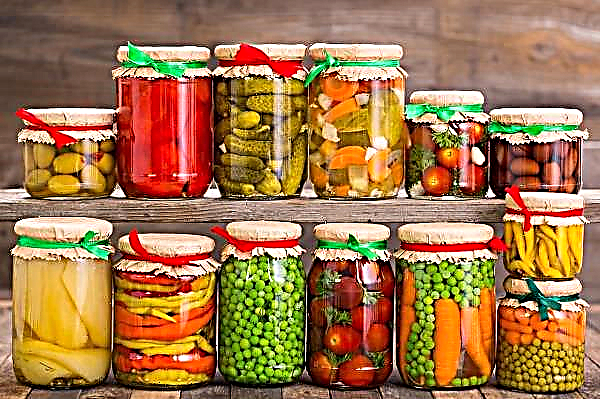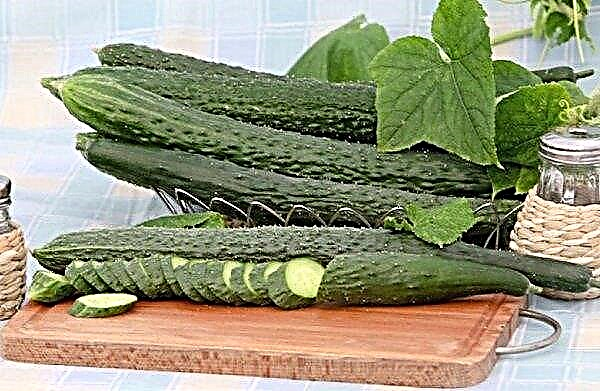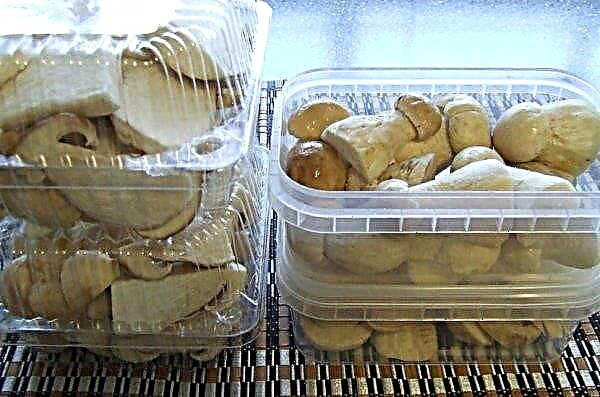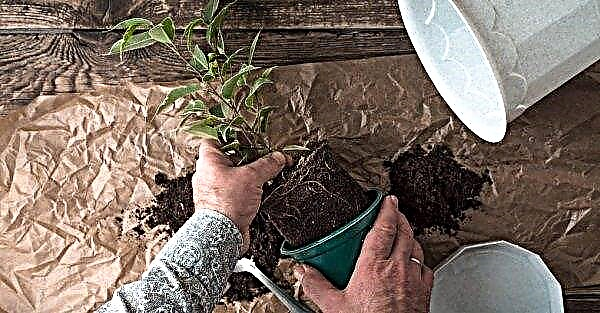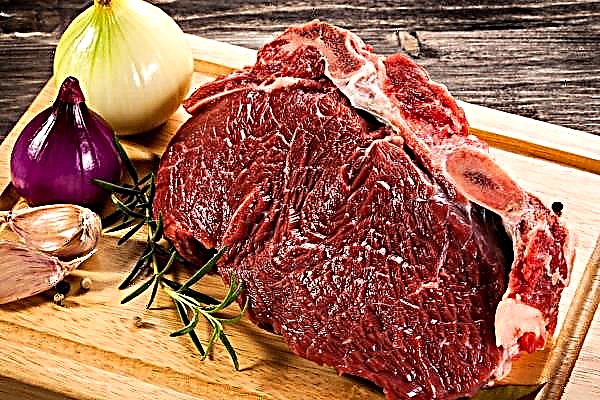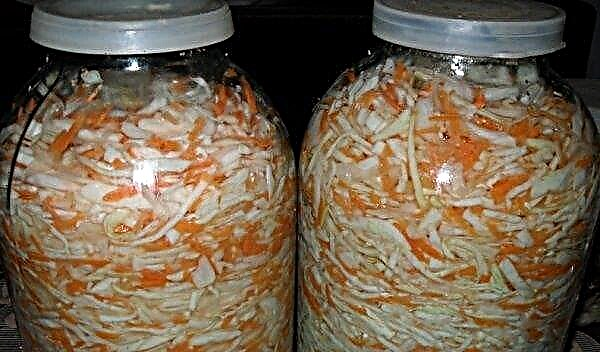Studying beer preparation technology as well as preparing quality ingredients is one of the brewer's most useful tasks. In the article you will find information about where the malt comes from, how the raw materials for it are selected and how to prepare the mentioned product based on wheat at home.
What is malt?
Malt is a general term that refers to grains sprouted to produce maltose sugar and then dried. It is obtained from wheat, barley, rye and other cereal crops.
How to make wheat malt
Malt extract has been produced for hundreds of years and it was the first grain-based sweetener that people received naturally using the simplest technology. This is the main source of taste for the future drink. Therefore, for its production you need to choose only high-quality grain. It should be borne in mind that different varieties give not only different tastes, but also color.
Did you know? Any new varieties of cereals are tested for 10–12 years, after which they are considered suitable for malting.
Grain selection
It all starts with the selection of varieties of cereal. In an industrial setting, the technologist knows exactly which types of wheat, barley or rye to use. In addition, it also requires suppliers to deliver exceptionally clean batches of raw materials collected at a particular point in time. For home brewing this information is not available, so buy the highest quality grain you can find.
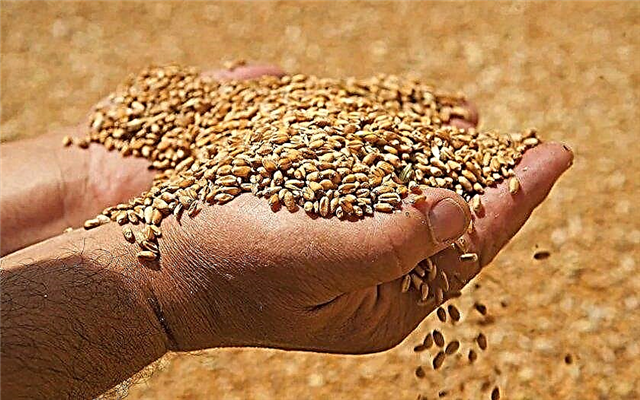
The batch should be carefully checked for germination and the presence of fungal toxins. Already sprouted grains infected with the fungus are at best just very bad malt, at worst toxic and dangerous to health. They begin the test by soaking a batch of grain (100 pcs.) In water for several days (3-4). Instances that surfaced immediately are thrown away, because they are empty and there are no germs in them. If the remaining batch shows germination of less than 90%, then it cannot be considered high-quality.
Disinfection
Any culture is potentially susceptible to the destructive effects of pests or diseases. Cereals are no exception. The main fungal disease is fusarium. The mushroom (Fusarium) produces stable toxins that can withstand the process of malting and roasting, and then get into the finished beer or other drink made from this raw material.
Important! Fusarium mushroom develops on plants in warm and humid weather.
Home methods for controlling the presence of the fungus are somewhat limited. But the first of them is the removal of all pop-up grains when soaked, as well as contaminated, gray, brown, shriveled or damaged. This reduces the risk of the presence of fungus in the remaining batch of raw materials by 20%. But if possible, then conduct a laboratory test to make sure that the grain is suitable for making a drink.

Soak
After the wheat is moved, it is soaked. This process allows you to remove another 40% of the fungal spores, if any. To ensure maximum cleaning, the water is changed several times during the soaking process. Wheat grains are especially susceptible to this fungus. A developing nucleus that has been infected becomes shriveled and grayish brown. At this stage, wheat is immersed in water, providing moisture up to 50%.
Did you know? Archaeological evidence suggests that wheat was first grown around 9600 BC.
The soaking cycle is as follows:
- Sifted from debris and sorted grain is poured with water so that it covers it by 3 cm.
- Mix, remove everything that has surfaced, and leave for 15-30 minutes.
- Then the water is drained and the raw materials are left for 10 minutes without water. The soaking / drying cycle will need to be repeated several times.
- After the second cycle, take water at room temperature (+ 20 ° C), add 25 drops of iodine for every 5 liters of water for disinfection. Pour wheat prepared with a disinfectant solution and leave for 2 hours.
- Again, drained and filled with clean cold water for 8 hours. After which 8 hours will follow, at which the grain remains in the tank without water. Such cycles should occur four more. The grain processing period is 3-4 days, until you see that the sprouts have hatched.

Germination
The process of germination will occur indoors at a temperature of about + 15 ° C. The important thing is that the temperature must be kept stable. For this, the layer by which the grain will be laid is constantly mixed (every 12 hours), making it thicker or thinner.
The result should be:
- a sweetish-tasting grain that gently crunches when cracked;
- cucumber flavor;
- a sprout equal in length to the length of the grain.
 At the time of germination, enzymes begin to convert starch and protein stores into amino acids and sugars. The most important task is to stop the germination process just at the moment when the nuclei contain the optimal amount of amino acids and sugars.
At the time of germination, enzymes begin to convert starch and protein stores into amino acids and sugars. The most important task is to stop the germination process just at the moment when the nuclei contain the optimal amount of amino acids and sugars.
Saccharification
Saccharification is the process by which the grain is saturated with moisture and dried to initiate germination. In the sprouted seeds, enzymes are activated that convert starch and proteins into sugars and amino acids, i.e. they are saccharified. The goal is to make these substances available to the brewer. To stop the fermentation process, the grain needs to be dried.
Drying malt
The cores are fired (dried), slowly raising the temperature to the point at which the process stops. When this moment comes determines the type of malt produced. In general, the higher the temperature, the darker the beer will be at the end of a long process.
Did you know? Wheat is extremely beneficial for a healthy diet. It reduces the risk of cardiovascular disease due to the fact that it is low in fat.
Stages of drying at home:
- Place the baking tray with grains in the oven at + 170 ° C for 20 minutes. At a temperature of + 80 ° C it will take about 3 hours of drying.
- Remove and check. The process is completed if the resulting grain is light amber in color and smells slightly fried.
- Refrigerate for 20 minutes, without removing from the pan, at room temperature.
 Other popular drying options include drying on a heating battery for several days.
Other popular drying options include drying on a heating battery for several days.
Sprout branch
At this stage, we have grains with sprouts. The latter is recommended to be removed so that the beer is not bitter.
For this:
- Dry grains are put in a canvas bag and rubbed. If there are a lot of them, then they are placed in a large container, and they are gently kneaded with a mixer at medium speed so as not to damage them.
- After that, you will need an assistant to hold the hair dryer. It is necessary to pour the grains from one tank into another, directing a stream of air at them. Light sprouts will fly off to the side, and the grain will fall into the tank.
The finished malting product is dried grain full of sugar and starch. It can be used when you are ready to start production. Then the brewer will grind the grain, combine it with hops and yeast to turn the remaining starch into simple sugars. In this state, they will easily succumb to the fermentation process. The result will be a wonderful, tasty beer.
Storage
Light, heat and oxygen are the natural enemies of malt. Heat over time makes it darker and destroys maltose. Light breaks down malt, changing its aroma. Oxygen - oxidizes, giving it the smell of cardboard and stale beer. Therefore, the product is stored in a container, that is, it must be hermetically packed and stored in the refrigerator until use. Shelf life - 6 months, although you can save even longer, but keep in mind that biologically active substances break down during long-term storage.
Important! Store malt in a canvas bag at room temperature only if you intend to make a drink in the near future.
Advantages and disadvantages of wheat malt
Wheat malt is used to make wheat beer. It is widely distributed in Belgium and Germany. Its advantage is a greater amount of protein compared to barley. But this same property quickly becomes a disadvantage when cooking wort, because protein makes it too viscous. Some recipes combine barley and wheat raw materials. But in order for the drink to be considered wheat, it must contain at least 40% malt from wheat grains.

The recipe for making moonshine from wheat malt
Wheat moonshine is one of the highest quality. It contains very few toxic impurities.
Important! If you thought about whether it is possible to perform triple distillation of the wort, the answer is unequivocal - no. Each subsequent cycle will degrade the quality of moonshine.
In addition, simple ingredients are sufficient for its preparation, namely:
- wheat malt - 8.5 kg;
- barley malt - 1.5 kg;
- water - 25 l;
- yeast - 30–35 g.

Cooking:
- Grind the grain to the state of fine cereals.
- Heat clean water, not bringing to a boil (+ 70 ° С) and remove from heat. Pour dry raw materials slowly and stir. The temperature should decrease to +60 ... 65 ° С.
- Now the container with the workpiece needs to be wrapped up and left for 30–90 minutes. During this time, starch residues must be completely converted to sugar.
- Periodically, the mass is mixed in order to maintain the same temperature throughout the volume.
- After 2 hours, an iodine test is done. To do this, in 1/2 teaspoon of wort you need to add a drop of iodine and stir. If the composition contains starch, then the liquid will acquire a blue-violet hue. So - the mass must still stand. If the color has not changed, then it's time to move on to the next step.
- Now the mixture needs to be cooled instantly by placing the pan in another container with ice.
- When the mass cools down to + 30 ° C - remove from ice. It is advisable to check the sugar content - it should be 12%. At a higher rate - add water and measure again.
- Pour the mass into a large bottle. Pour in yeast that has previously been fermented.
- Install a water seal. Leave indoors at room temperature. On the first day, the mass will ferment intensively, forming a foam.
- 3-5 days after the start of fermentation, they proceed to the preparation of moonshine. This must be done immediately, as soon as the mash stops foaming. If you try it, then it should be bitter in taste.
- Filter the mass through gauze or a fine sieve.
- Distill. Double distillation improves the quality of the final product.
- Dilute the obtained distillate to the desired strength of the drink.

Wheat moonshine is considered very high quality. Prepared by mixing barley and wheat raw materials, it has a whiskey flavor. In the future, the resulting drink can be used for the preparation of vodka, various tinctures and other drinks.


